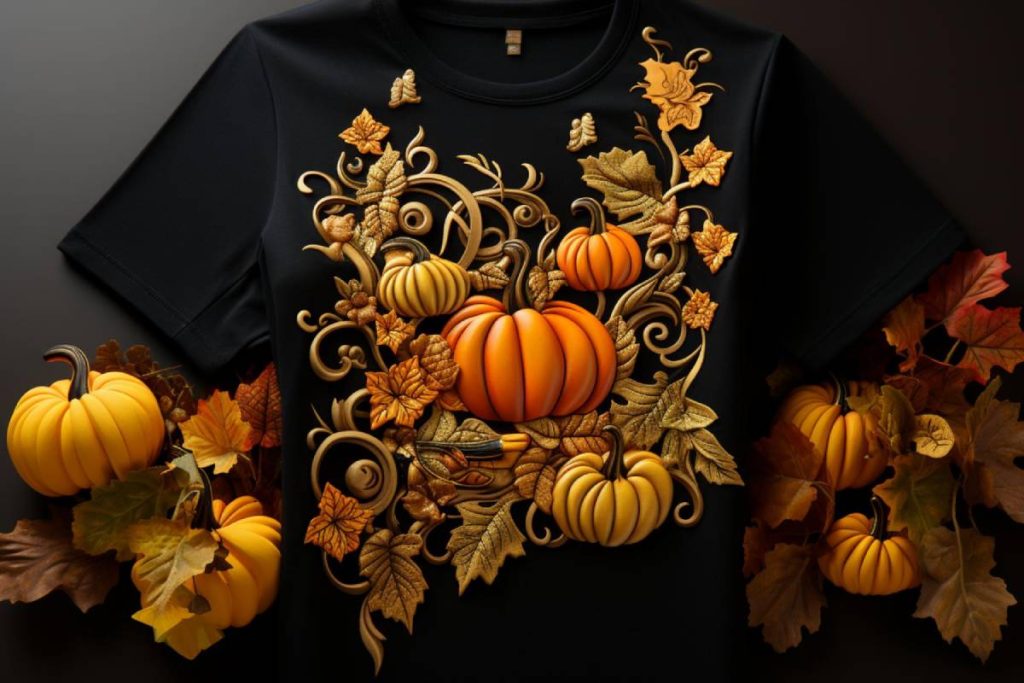UV DTF printing, or Ultraviolet Direct to Film printing, represents a groundbreaking advancement in the world of custom printing solutions. Utilizing innovative UV inks, this process not only produces vibrant, detailed images but also cures the ink quickly, making it suitable for various substrates including textiles, metal, and glass. As the demand for sustainable printing grows, UV DTF printing stands out for its efficiency and eco-friendliness, offering a green alternative in the custom printing industry. This technique is perfect for entrepreneurs aiming to offer personalized items or for hobbyists eager to develop new skills in direct to film printing. Explore the wealth of possibilities that UV DTF printing can unlock in your custom printing journey.
Exploring the realm of Direct to Film (DTF) printing unveils a captivating fusion of technology and artistry. This innovative technique employs ultraviolet light to solidify inks, making it an appealing choice for vibrant color applications across a variety of materials. Often referred to as UV printing, this method opens new doors for creating personalized products while adhering to the principles of sustainable printing. With its use of specialized UV inks, DTF technology caters to the growing trend of custom solutions in the printing landscape. Dive into this guide to learn more about how you can harness the power of UV DTF methods to elevate your creative projects.
Benefits of UV DTF Printing
UV DTF printing offers numerous benefits that make it a preferred choice among custom printing solutions. Firstly, the process utilizes UV inks, which are not only vibrant but also extremely durable. Unlike traditional inks, UV inks are cured instantly under ultraviolet light, preventing smudging and ensuring high-quality outputs. This durability makes UV DTF prints ideal for products that undergo regular handling or exposure to the elements, such as outdoor signage or promotional items.
Additionally, one of the standout features of UV DTF printing is its versatility. This method allows printing on a wide range of substrates, including textiles, plastics, metal, and glass, expanding creative possibilities for designers and businesses alike. The ability to print detailed designs with vibrant colors on unconventional surfaces sets UV DTF apart from standard printing techniques, making it an appealing option for those looking to offer unique products.
Understanding the Technology Behind UV DTF Printing
Understanding the technology involved in UV DTF printing is crucial for those looking to embark on this journey. At its core, this printing method integrates the principles of UV printing with direct-to-film techniques. A specialized UV printer employs UV inks that require exposure to ultraviolet light for instant curing. This technology not only enhances color vibrancy but significantly reduces drying times, which is a remarkable advantage in the fast-paced world of custom printing.
Moreover, the direct-to-film aspect allows for intricate designs to be printed on a transfer film before being applied to the desired surface. This means that users can work with a variety of inks and films to achieve the desired effects, making it a highly customizable process. Understanding this technology equips aspiring printers with the knowledge to select appropriate equipment and materials, ensuring optimal results in their printing endeavors.
Choosing the Right Equipment for UV DTF Printing
Selecting the right equipment is pivotal in successfully starting with UV DTF printing. Essential equipment includes a high-quality UV printer, heat press, and specialized films designed to withstand UV curing processes. When investing in a UV printer, consider factors such as build quality, warranty, and customer support, as these elements play a significant role in the machine’s performance and longevity. Reliable manufacturers often provide comprehensive training to help new users navigate their machines effectively.
Furthermore, the choice of UV inks is equally crucial. Ensure that the inks you select are specifically formulated for UV DTF printing and compatible with your printer model. Quality inks not only enhance the print’s vibrancy but also its durability, which is essential for customer satisfaction. Keeping abreast of emerging technologies and product innovations can also guide your equipment choices to stay competitive in the evolving landscape of print solutions.
Artwork Preparation for UV DTF Printing
Proper artwork preparation is key to achieving stunning results in UV DTF printing. Utilizing graphic design software like Adobe Photoshop or Illustrator, designers must ensure that the artwork is in a compatible file format suited for the UV printer. Attention to detail is vital; optimizing resolution and adhering to color settings is essential to produce high-quality, vibrant prints. Crafting the design with awareness of how it translates to physical products will yield better outcomes.
Conducting test prints serves as an invaluable step in this process. It allows you to assess the design’s layout, color fidelity, and overall print quality before committing to the final product. Adjustments based on test prints can significantly enhance the vibrancy and clarity of the final output, ensuring that your artwork meets the expectations of clients and consumers alike. This meticulous approach to artwork preparation lays a solid foundation for successful UV DTF printing.
Market Trends Influencing UV DTF Printing
The UV DTF printing market is rapidly expanding, driven by trends emphasizing customization and sustainability. Businesses increasingly recognize the potential of unique custom printing solutions, making UV DTF a sought-after method for creating personalized items. This trend highlights the demand for innovative designs and products that resonate with consumers, providing an opportunity for new entrants to capture niche markets.
Additionally, there is a growing emphasis on sustainable printing practices within the industry. Brands are exploring eco-friendly alternatives in their operations, leading to the development of innovative UV inks and films that reduce environmental impact. This commitment to sustainability not only addresses consumer preferences but also enhances brand reputation, positioning companies favorably in a competitive marketplace. Keeping an eye on these trends will empower aspiring printers to align their offerings with market demands.
Post-Processing Techniques in UV DTF Printing
Post-processing is an essential phase in UV DTF printing that can significantly impact the final product’s quality and longevity. After transferring the film onto the substrate, trimming excess film is crucial for achieving a clean, professional finish. This step ensures that the focus remains on the design while preventing any unwanted edges that could detract from the visual appeal.
Applying a protective coat post-transfer enhances durability, especially for items likely to encounter wear and tear, such as apparel and promotional materials. This additional layer safeguards prints from scratches, fading, and other potential damage, extending the lifespan of the products. Moreover, testing for washability and longevity before market release can help establish a reputation for quality and reliability among customers, a vital aspect in building a successful custom printing business.
Frequently Asked Questions
What is UV DTF printing and how does it work?
UV DTF printing, or Direct to Film printing, is a cutting-edge technique that uses ultraviolet light to cure specially formulated UV inks on transparent films. The process involves printing vibrant, high-quality designs onto these films, which are then transferred onto various substrates, ensuring durability and vivid color reproduction.
What equipment is necessary for starting UV DTF printing?
To start with UV DTF printing, you’ll need a UV printer specifically designed for UV inks, a heat press for transferring prints onto substrates, and high-quality transparent films compatible with the UV curing process. This equipment is essential for ensuring the quality and efficiency of your custom printing solutions.
What makes UV inks suitable for DTF printing?
UV inks are specially formulated to cure instantly when exposed to UV light, making them ideal for UV DTF printing. This instant curing not only enhances vibrancy and detail but also ensures the durability of the prints, making them resistant to fading and scratches, which is crucial for high-quality custom prints.
Can UV DTF printing be used on multiple substrates?
Yes, UV DTF printing is highly versatile and can be used on a variety of substrates including textiles, metals, glass, and acrylics. This flexibility allows businesses to offer a wide range of customized products, appealing to diverse market needs.
How does UV DTF printing contribute to sustainable printing solutions?
UV DTF printing supports sustainable printing by utilizing eco-friendly UV inks and processes that minimize waste. With rising demand for sustainable printing solutions, UV DTF technology provides a greener alternative, as it eliminates excess solvent use and reduces environmental impact.
What steps should I take for quality control in UV DTF printing?
For quality control in UV DTF printing, ensure that you perform thorough inspections post-printing for curing issues and adherence. Maintain a checklist to monitor color accuracy, detect fading, and verify the durability of prints. Conduct tests for washability and longevity to guarantee high-quality custom printing solutions.
| Key Step | Description |
|---|---|
| Understanding the Technology | Learn about the essential equipment (UV printer, heat press, specialty films) and UV inks used in the process. |
| Choosing the Right Media | Select high-quality transparent films and choose suitable substrates such as textiles, metal, or acrylic. |
| Preparing Your Artwork | Use graphic design software to create designs, ensuring compatibility and quality in terms of resolution and color. |
| Printing Process | Follow manufacturer guidelines to calibrate and execute print jobs effectively. |
| Curing the Ink | Expose printed ink to UV light to cure, ensuring quality control to catch any discrepancies. |
| Transfer to Substrate | Use a heat press to transfer film onto the substrate, monitoring settings for optimal adhesion. |
| Post-Processing | Trim excess film and conduct durability tests to ensure high-quality final products. |
Summary
UV DTF printing is a cutting-edge printing technique that combines UV light and Direct to Film technology to achieve stunning results on a variety of materials. By understanding the intricate processes involved, including the choice of inks and substrates, and mastering the printing and curing techniques, users can produce high-quality customized items. Staying informed about industry trends and advancements is key for success in this rapidly evolving niche. As demand for personalized printing solutions continues to rise, embracing UV DTF printing opens the door to immense creative and business opportunities.



